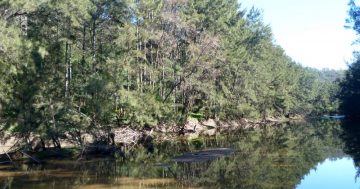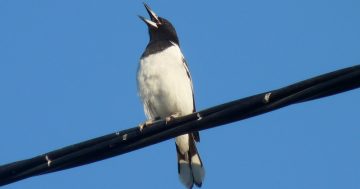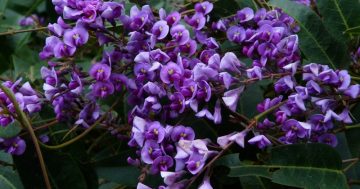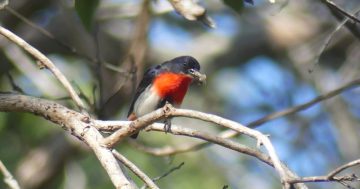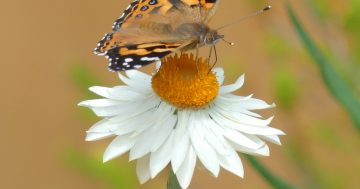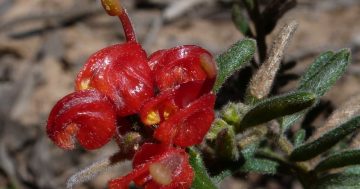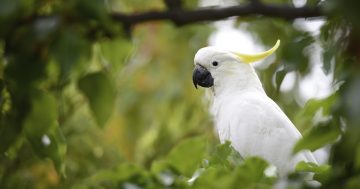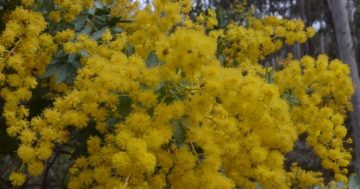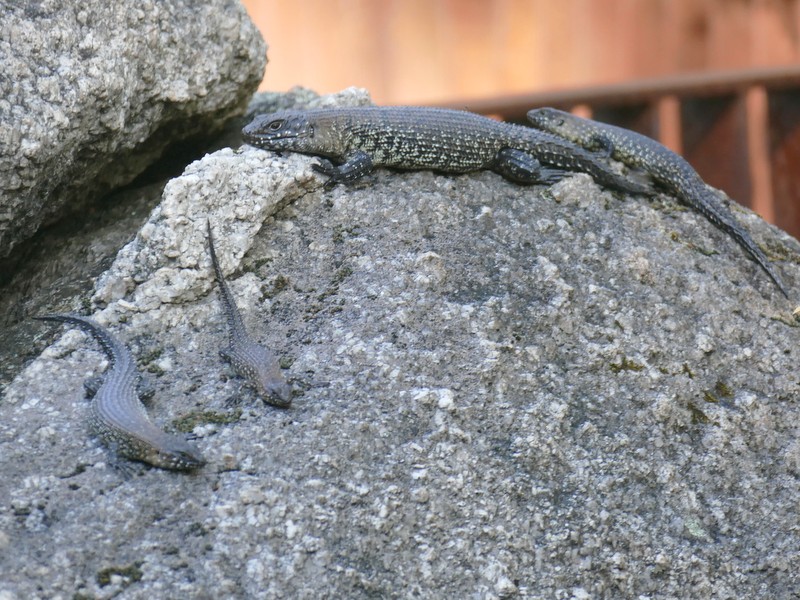
Cunningham’s Skinks, here part of a family at Tidbinbilla, were named for Allan Cunningham. Photo: Ian Fraser.
In my last column, I talked, among other she-oak topics, about the local River Oaks which grow along the Murrumbidgee, Paddy’s and Cotter rivers in the ACT.
I try to keep scientific names out of these columns, so I didn’t mention that it is also known as Casuarina cunninghamiana, ie Cunningham’s Casuarina. This commemorates someone whose work I greatly admire, an explorer whose travels were driven by the desire to find and collect new plants.
Allan Cunningham was born to a Scottish father and English mother in 1791 and, having found that the law was not for him, went to work as a clerk at Kew Gardens where he came to the notice of the great Sir Joseph Banks, who had sailed to Australia on the Endeavour.
Banks recommended that the gardens employ Cunningham as a roving collector; how he could have known that Cunningham had such potential I can’t imagine, but he was absolutely right.
To cut a long and fascinating story short, he sailed for Brazil in 1814 aged just 23 and presumably with no idea that he wouldn’t be seeing home again for another 17 years! He had seemingly never left Britain, so Brazil must have been an extraordinary experience.
After two years there he was ordered to sail to NSW, arriving just before Christmas of 1816. Soon afterwards, he accompanied the notoriously grumpy Surveyor-General John Oxley to the western plains. Oxley typically complained about the country but young Allan was delighted by his 450 plant species and walked home across the Blue Mountains so his horse could carry them.
He spent five years sailing around Australia – and, of course, collecting ashore – with Philip Parker King (son of the third governor).
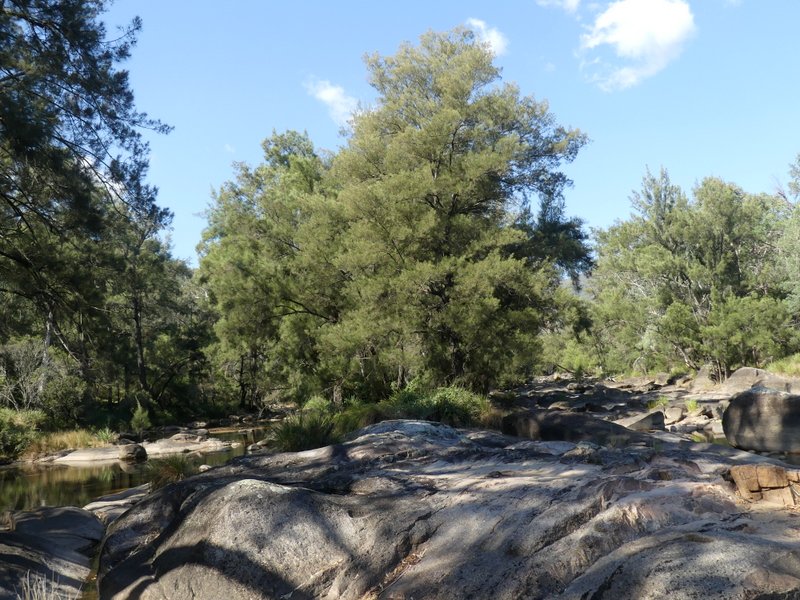
River Oaks was named for Allan Cunningham as a tribute after his death. Photo: Ian Fraser.
And there’s even a Canberra connection. In 1824, before the Limestone Plains were settled, he travelled to Lake George. He continued south, becoming the first European botanist to explore the area around Ginninderra Creek where Gungahlin now stands.
More famously, he explored northern NSW and into southern Queensland where, in a couple of trips, he mapped the route through Pandora’s Gap in the Liverpool Range to the Darling Downs and through what is now Cunningham’s Gap to Moreton Bay.
He went back to England in 1830 (having waited two years for permission to do so), already ill, but returned to Sydney in 1837 to take up the position of Colonial Botanist following the death of his younger brother Richard.
When he found that the post included providing vegetables for the governor’s kitchen, he resigned to resume plant collection, which he described as a “more legitimate occupation”, but within two years, he’d died of consumption, aged just 47. He was collecting almost to the end.
Many Australian plants are named for him, the River Oak and other such well-known ones as Hoop Pine (Araucaria cunninghamii) and Myrtle Beech (Nothofagus cunninghamii).
There is also a large lizard which is quite common locally. Cunningham’s Skink (Egernia cunninghamii) grows to 40 cm long and is distinguished by its spiky back-pointing scales on its body and tail.
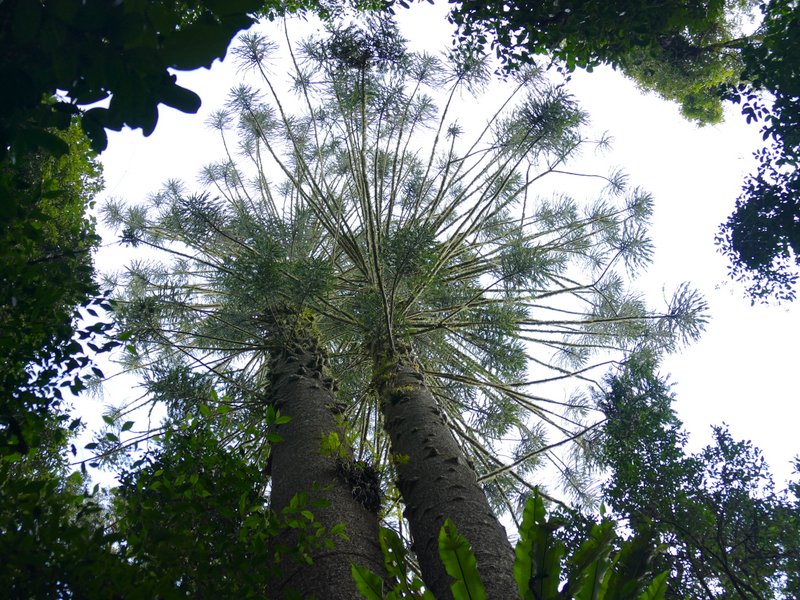
The Hoop Pine was named Araucaria cunninghamii for Allan Cunningham, who apparently first collected specimens in southern Queensland. Photo: Ian Fraser.
When threatened it will go head first into a crevice and wedge itself in by puffing up its body with the spiny tail facing backwards. This makes it almost impossible for a predator to extract.
Unusually among lizards, it lives in family groups of up to 30 in boulder stacks and fallen logs. While young, they live on insects, especially beetles, but as adults, they are mostly herbivores, which is unusual among lizards.
One of the most reliable places to see them is on the granite boulders alongside the lookout by the shelter at the southern end of the Sanctuary walking track at Tidbinbilla. This colony is used to people and the basking Cunningham’s Skinks here can be enjoyed at close range.
I’ve always admired Allan Cunningham for his quiet passion for understanding the natural world and his self-effacing stoicism and commitment. I love it too that so many plants and even a familiar lizard can remind me of him.
Ian Fraser is a Canberra naturalist, conservationist and author. He has written on all aspects of natural history, advised the ACT Government on biodiversity and published multiple guides to the region’s flora and fauna.











